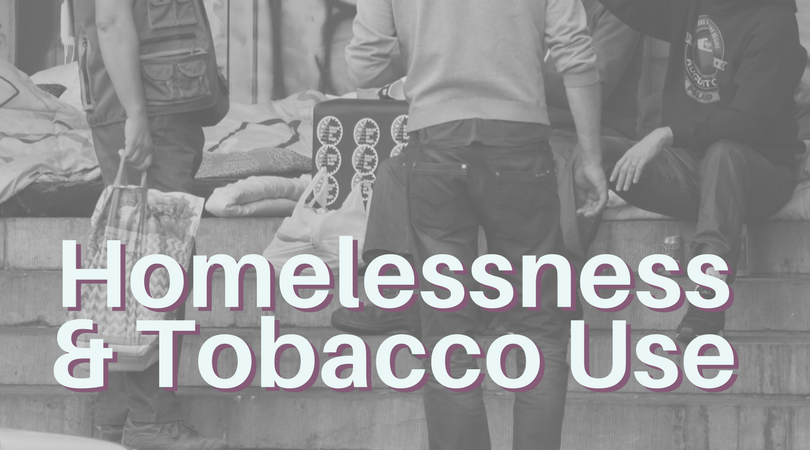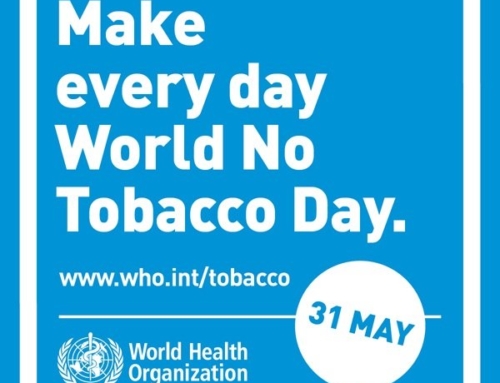April 15-21 is National Volunteer Week. To kick things off, we are highlighting a program in the community that SRAHEC started in 2015 to help the homeless and near-homeless in Gainesville quit tobacco.
The transient nature of homelessness makes it challenging to get a good estimate of the number of homeless individuals in the U.S. Estimates also vary depending on whether the measurement is taken on a single night or is extrapolated to a given year. These estimates range from approximately half a million on any given night to two thirds of a million in any given year. Despite a recent decrease in overall unsheltered nights nationally, only 18 states reported a decrease in the number of people living in unsheltered locations, including the street, cars, and abandoned buildings. Current estimates of homelessness in the U.S. are biased toward counts of sheltered or visibly unsheltered individuals. Those who remain out of sight during counts and/or live in places or circumstances that elude the United States Department of Housing and Urban Development’s (HUD) definition of homelessness remain undercounted. Underreporting the unique characteristics associated with subgroups of people experiencing homelessness also limits access to the services that best meet their needs. Since national counts drive policy and funding for housing-related services, front-line providers have too few resources to treat the less visible and understood populations. The number of homeless counted in Alachua County has also varied from as high as 1,814 in 2012 to an estimated 819 in 2017. 2
Estimates for smoking among the homeless vary from 60 to 90 percent. It is clear, however, that the rate is almost four times that of the general U.S. population and two times that among impoverished Americans. One study from a focus group reported that the pervasiveness and social acceptance of tobacco use in homeless settings contributed to smoking more cigarettes per day, adopting alternative smoking behaviors such as smoking cigarette butts and making their own cigarettes, and experiencing difficulty in quitting. High levels of boredom and stress also were cited as reasons for continued smoking. Smoking frequently occurred in combination with alcohol or other drug use to achieve a substitute “high.” Most participants (76%) reported that they planned to quit smoking in the next 6 months. Many were interested in using pharmacotherapy in combination with behavioral treatments. Results suggest that although motivated to quit smoking, homeless smokers are faced with unique social and environmental barriers that make quitting more difficult. Interventions must be flexible and innovative to address the unique needs of homeless smokers. Smoking restrictions at homeless service facilities and funding for smoking cessation assistance in this underserved population may help to reduce prevalence.1
Tobacco-related chronic diseases are among the leading causes of morbidity and mortality among homeless adults. For example, cardiovascular disease is the primary killer of homeless and formerly homeless individuals and chronic obstructive pulmonary disease is more than twice as high in homeless individuals as in the general population. In addition, they are susceptible to a range of chronic and infectious disease and common health concerns, including HIV, diabetes, cancer, asthma, and others.
A collaborative program between SRAHEC and the Helping Hands Clinic has been in place for four years with a goal of reducing the prevalence of tobacco use among the homeless and near homeless who receive care at the volunteer-staffed clinic. A grant from the University of Florida Medical Guild funded a one-year effort in 2015, which showed some gains with intensive treatment with both supportive counseling and long-term nicotine replacement therapy. The results of this grant were presented in a poster session at the March 2017 National Conference on Tobacco or Health (NCTOH) conference. The collaboration (without supplemental funding) is still ongoing with monthly tobacco treatment groups and weekly recruitment and meetings with clinic staff, providers and other volunteers at the clinic.
Sources
- Okuyemi, Kolawole S., et al. “Homelessness and Smoking Cessation: Insights from Focus Groups | Nicotine & Tobacco Research | Oxford Academic.” OUP Academic, Oxford University Press, 1 Apr. 2006, academic.oup.com/ntr/article/8/2/287/1166832.
- Barton, Champe. “Point-in-Time Survey Tallies Alachua County’s Homeless.” Gainesville Sun, Gainesville Sun, 25 Jan. 2018, www.gainesville.com/news/20180124/point-in-time-survey-tallies-alachua-countys-homeless.
About the Author: Cathy Cook, LCSW
 |
Cathy Cook is Suwannee River AHEC’s Lead Systems Change Coordinator. |







